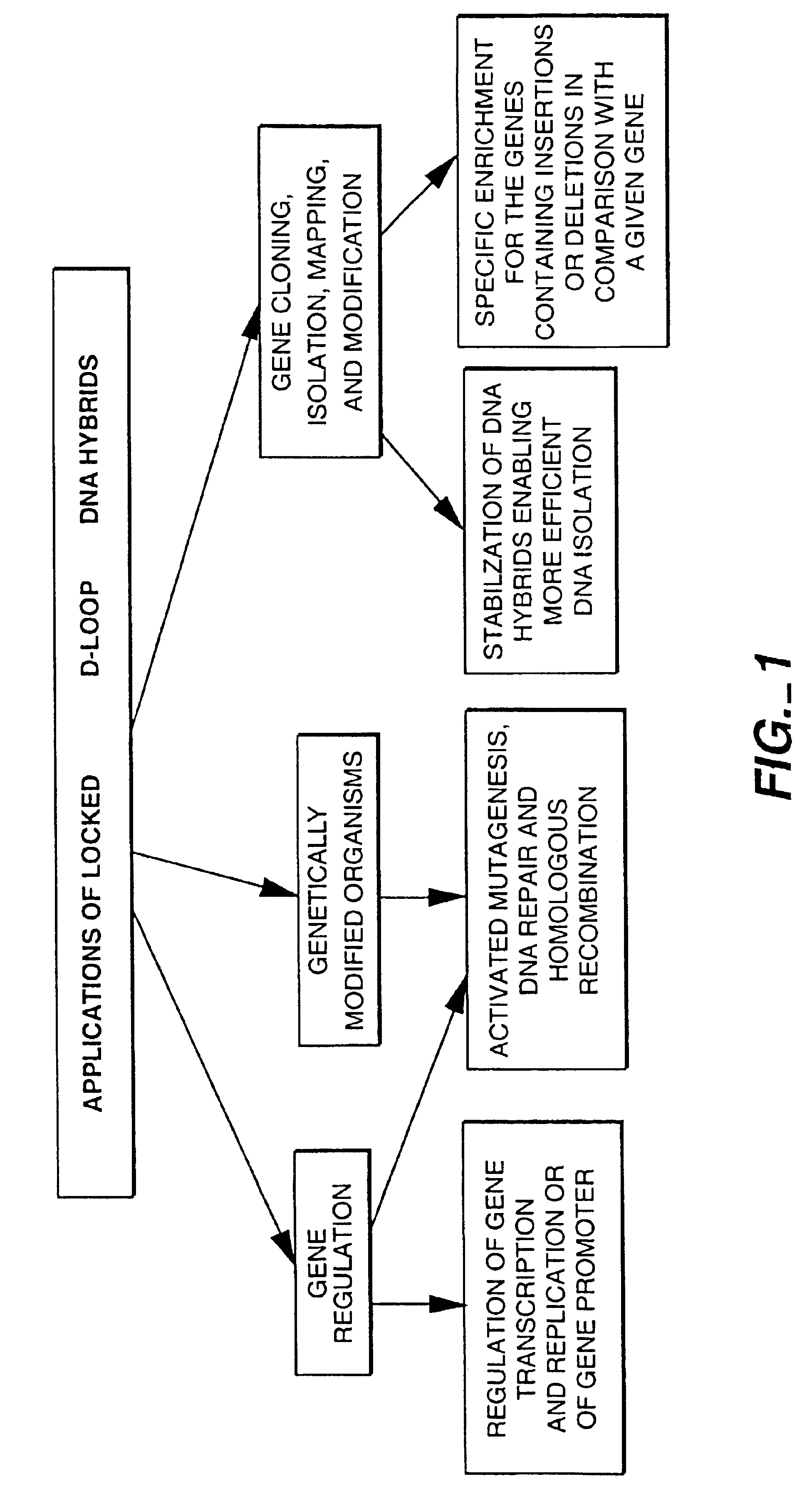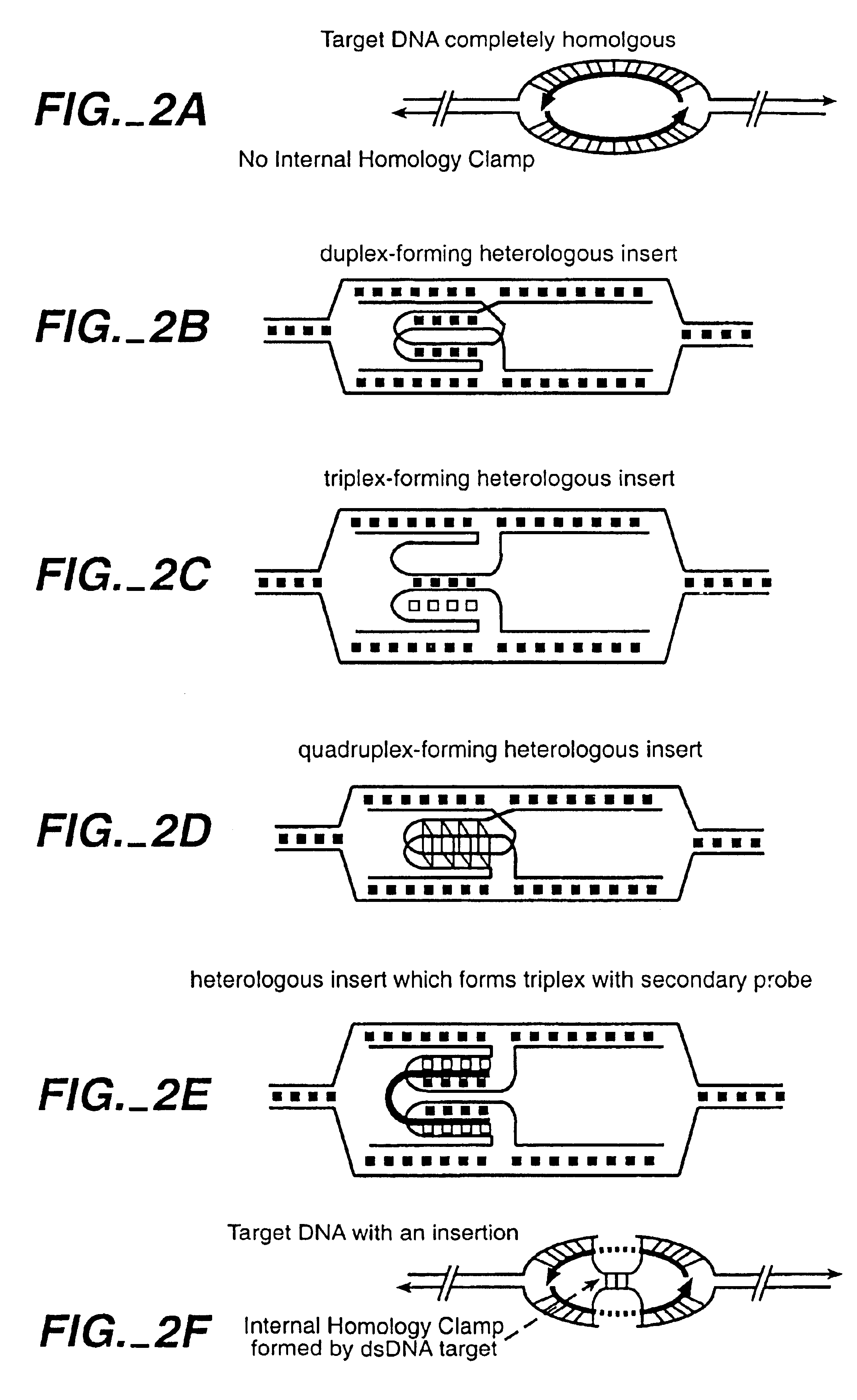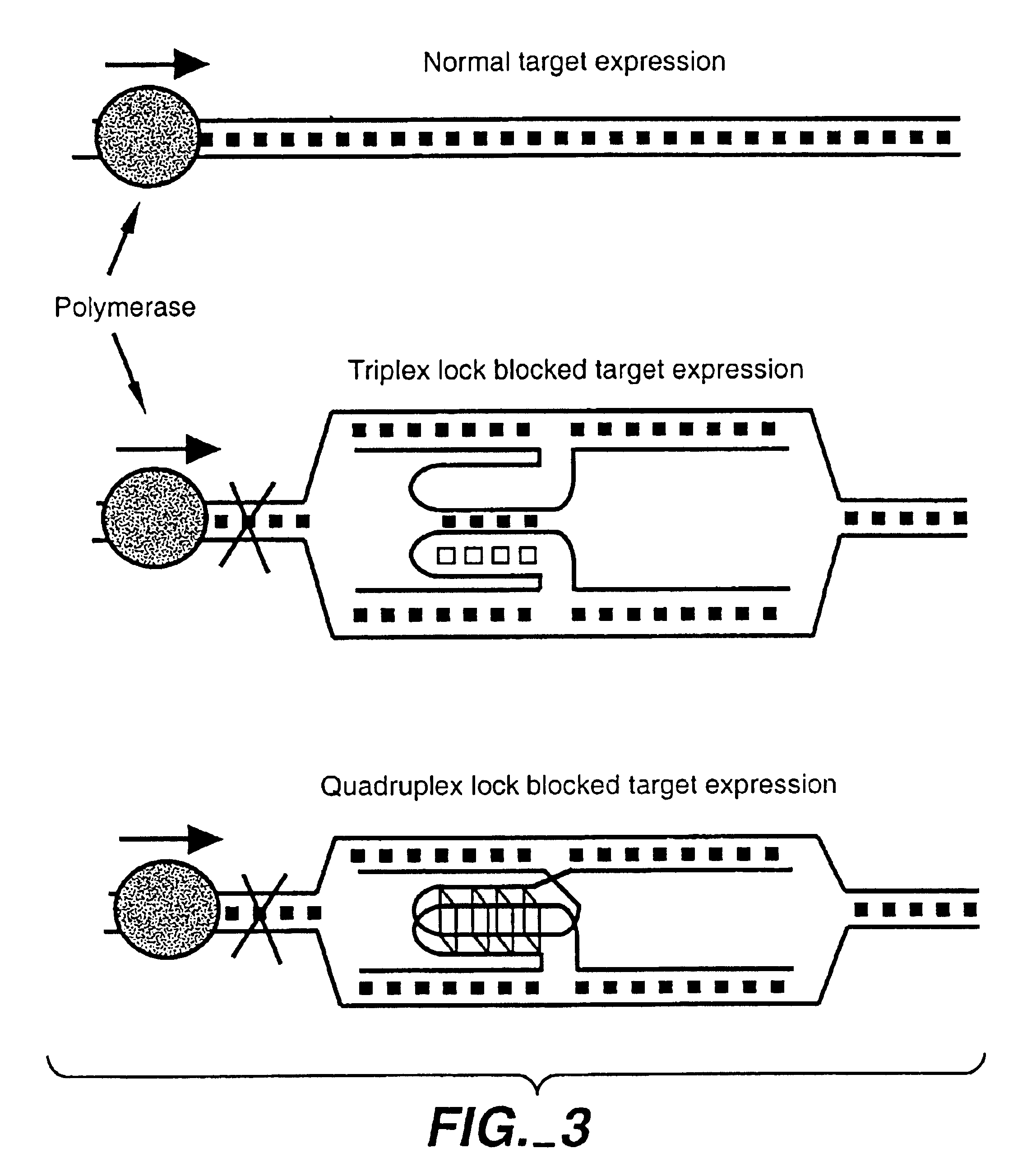Locked nucleic acid hybrids and methods of use
a technology of locked nucleic acids and hybrids, which is applied in the field of methods of regulating, cloning, labeling, or modifying an endogenous dna sequence, and can solve the problems of host harm, limit the applicability of these techniques, and severe limitations of tfos utility
- Summary
- Abstract
- Description
- Claims
- Application Information
AI Technical Summary
Benefits of technology
Problems solved by technology
Method used
Image
Examples
example 1
Increased Kinetic Stability of Triplex and Quadruplex Locks
[0157]In this example, the thermal stability of a triplex and quadruplex locks was evaluated as compared to targeting polynucleotides lacking an anchoring sequence.
[0158]Three sets of complementary single stranded (css) probes were designed as follows. The target sequence was the 62 nucleotides from bases 667 to 723 of pBluescript II SK(−) (Stratagene. LaJolla, Calif., FIG. 9A). The control reaction comprises two complementary single stranded nucleic acids (cssDNA) comprising these 62 bases and their complement. Targeting polynucleotides comprising the quadruplex forming lock 5-TTGGGGTTGGGGTT (SEQ ID NO:9) are shown in FIG. 9C (Sundquist et al., (1989)). Targeting polynucleotides also were made comprising the triplex forming lock GGGTGGTGGGTGGGGTATTAGGGGAGGGAGGAGGG (SEQ ID NO:17) inserted in the sequence (Dayn et al., PNAS USA 89:11406 (1992)).
[0159]The targeting polynucleotides were obtained either by chemical synthesis. Ol...
example 2
DNA Hybrids Stabilized by Heterologies
[0161]The double D-loop DNA hybrid contains four DNA strands following hybridization of two RecA protein coated complementary single-stranded DNA probes with a homologous region of a double-stranded DNA target. A remarkable feature of the double D-loop DNA hybrids is their kinetic stabilities at internal sites with linear DNA targets after removal of RecA proteins from hybrids. DNA heterologous normal distort DNA-DNA hybrids and consequently accelerate the stability of protein-free double D-loop hybrids. Here we show that heterologous DNA inserts impede dissociation of double D-loops.
[0162]Without being bound by theory, we propose a mechanism for stabilization of heterologous DNA isnerts based on the hypothesis that the main pathway of dissociation of double D-loop DNA hybrids is a DNA branch migration process involving rotation of both probe-target duplexes in the hybrids. Heterologous DNA inserts constrain rotation of probe-target duplexes and...
example 3
Blocking Transcription Using Locks
[0180]In these experiments a modified version of in vitro transcription assay described by Golub et al., (1992, 1993, supra) was used. Briefly, double-stranded DNA fragments having about 300 bp of homology (including T7 promoter) with a pBluescript II SK(−) were obtained by PCR either from pBluescript II SK(−) or pTL plasmid (pTL plasmid was derived from pBluescript II SK(−) by inserting the triplex forming sequence, 5-GGGTGGTGGGTGGGGTATTAGGGGAGGGAGGAGGG-3 (SEQ ID NO:17) (Dayn et al., 1992, supra) into the HindIII / EcoRI site; FIG. 16). The probes obtained from pTL plasmid were designed to form a triplex lock when targeted to pBluescript II SK(−). In addition, probes shown in FIGS. 9A-C also are used.
[0181]To obtain css probes, the PCR fragments were, purified, denatured, and coated with RecA as above. The targeting reaction between the css probes and pBluescript II SK(−) (linearized by ScaI) are allowed to run for 1.5 hours. T7 RNA polymerase and NT...
PUM
| Property | Measurement | Unit |
|---|---|---|
| Composition | aaaaa | aaaaa |
Abstract
Description
Claims
Application Information
 Login to View More
Login to View More - R&D
- Intellectual Property
- Life Sciences
- Materials
- Tech Scout
- Unparalleled Data Quality
- Higher Quality Content
- 60% Fewer Hallucinations
Browse by: Latest US Patents, China's latest patents, Technical Efficacy Thesaurus, Application Domain, Technology Topic, Popular Technical Reports.
© 2025 PatSnap. All rights reserved.Legal|Privacy policy|Modern Slavery Act Transparency Statement|Sitemap|About US| Contact US: help@patsnap.com



